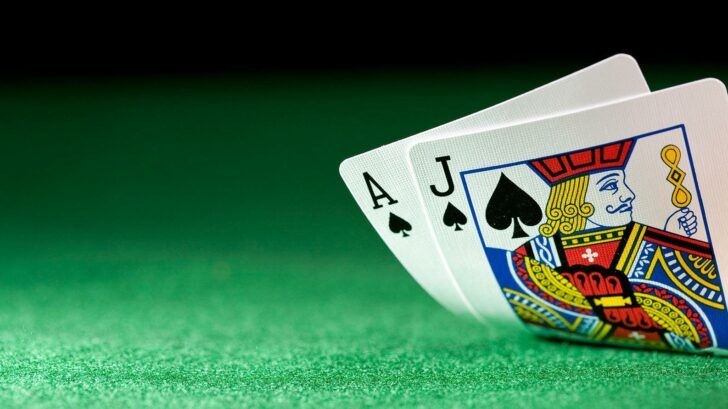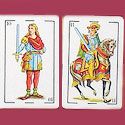Blackjack Card Decks – Brief History of Casino Game and Origin of Name


Blackjack History
The history of blackjack card game, called 21 until modern times dates to the 17th century when blackjack hustlers and card sharps already existed.
Blackjack is the American name for the popular card game called ‘21’ which has been played for more than 400 years in Europe. The name blackjack came about sometime in the mid-19th century as one of many variations of ‘21’ offered at only some gambling houses in the United States and territories.
The Blackjack rule variations which separated it from regular ‘21’ was a special jackpot of ten times the bet size which was won when the player’s first two cards were an Ace of Spades and a Jack of Spades or Clubs.
The origin of ‘21’, or blackjack card games if you prefer, is lost in antiquity. There are many guesses but none are backed up by any scientifically acceptable proof.
There is no historical evidence that the number 21 was considered more sacred or lucky in ancient times than other numbers or was association with a lucky event. There is no account of any historical figure of the caliber of Julius Caesar or Alexander the Great associating 21 with luck. But of course 99% of all writings from that period are no longer with us.
Yet we know a few things. We know that playing cards were used in India and China around the year 800 (1200 years ago). We know that there were four suits. We know little about the route playing cards followed to make their way to Europe. Whether by eastern fortune tellers, the crusades, Spanish moors, a trading vessel or even Marco Polo is anyone’s guess.
Nothing is known about the history of blackjack during the Dark Ages since the only writings that survived are illustrated copies of religious works and official documents.
We know that Switzerland passed a law banning the use of playing cards in the year 1367 but again no reference exists about the specific games which were played to cause the ban. As happens too often, ancient authors mention many names of items or activities but fail to describe them since in those times those words would have been known by all, but centuries later are completely forgotten.
There is a slim hope that the Pompeii scrolls being analyzed now from the alleged library of a famous Roman epicure may possibly shed more light on the subject. Without some amazing discovery rotting away in a library or a long lost tomb, it is highly unlikely that the origins of blackjack will ever be known.
The card game of ‘21’ where the Ace has values of 1 or 11 and whose object is to reach 21 without going over was first written about 410 years ago (1601) by the author of Don Quixote. The Spanish author, Miguel de Cervantes, wrote about a card game played for money called ventiuna (Spanish for twenty one), in his Novelas Ejemplares.
The book focuses on two card sharps who work as a team to cheat gamblers at ventiuna games all over Seville, Spain. The game in the book was played with a Spanish baraja deck of cards which has no 8, 9, or 10 value cards. De Cervantes was an avid gambler so perhaps such a game really existed. However, it is just as possible that the author invented game.
Since De Cervantes target audience was most likely made up of women from wealthy households, he had to explain the rules or invent the entire game so as to not cause an outcry against any real card games played in the Castilian region at the time.
Soon after 1601, non-fiction writings from Spain and France speak of the game ‘21’, which by that time was well known throughout the region.




